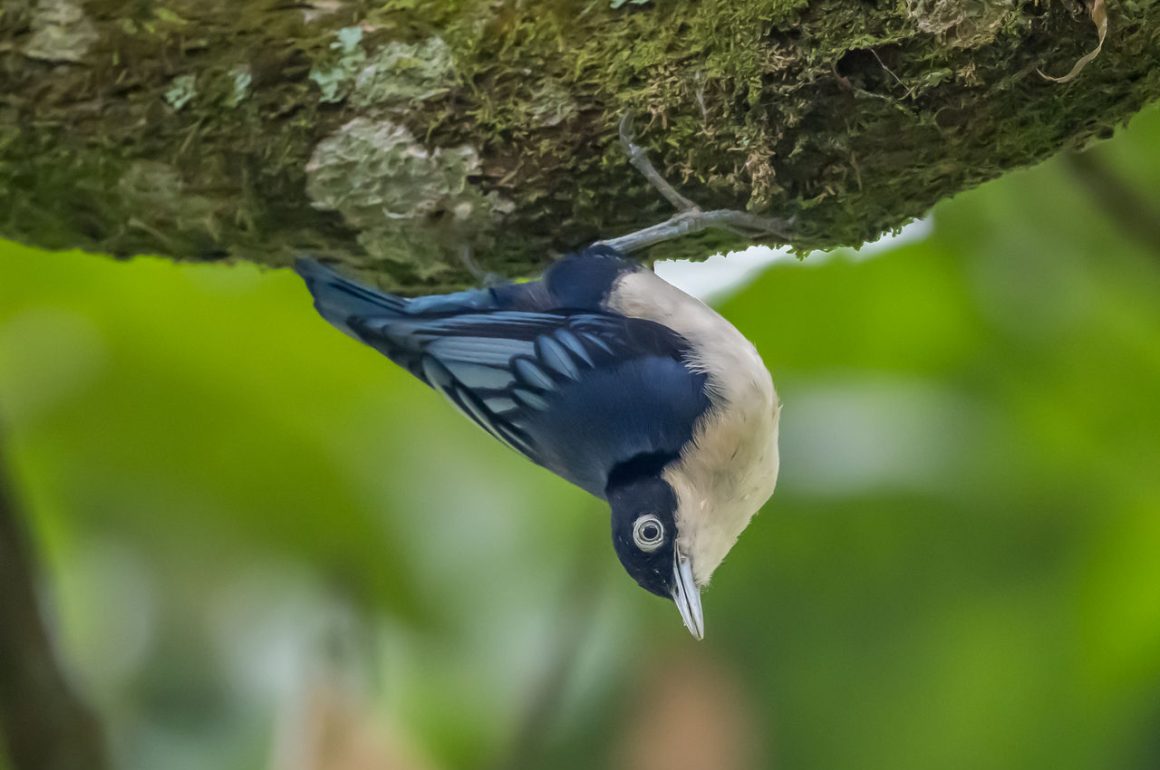
Raden Soerjo Forest Park is an area of montane evergreen forests and also has a fairly high mountain (Gunung Arjuno, 3399 meters). It is about 3 hours by car from Surabaya and about 2 hours from Malang – though as a major local tourist spot, it may take longer to get there on weekends. Local attractions include waterfalls and hot springs. As a typical birder, I mostly ignored these, focusing on the birds instead.
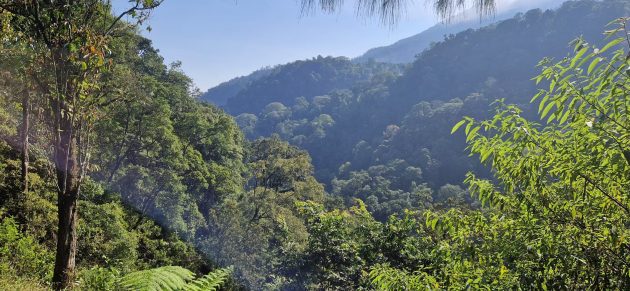
One of my favorites there was the Blue Nuthatch, which is brilliantly described by eBird: “Not the only blue nuthatch, but the bluest nuthatch”.
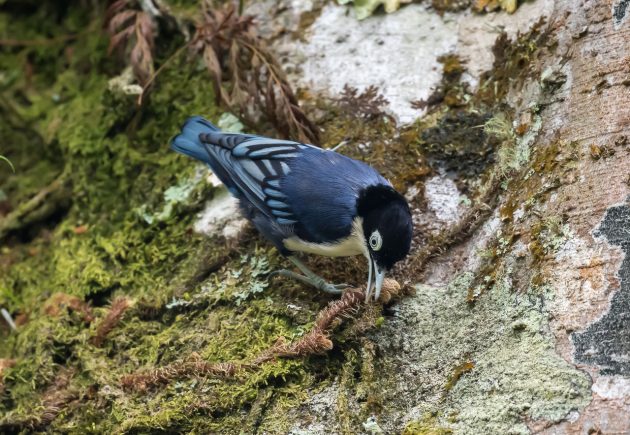
This blueness is also indicated in the scientific name – Sitta azurea.
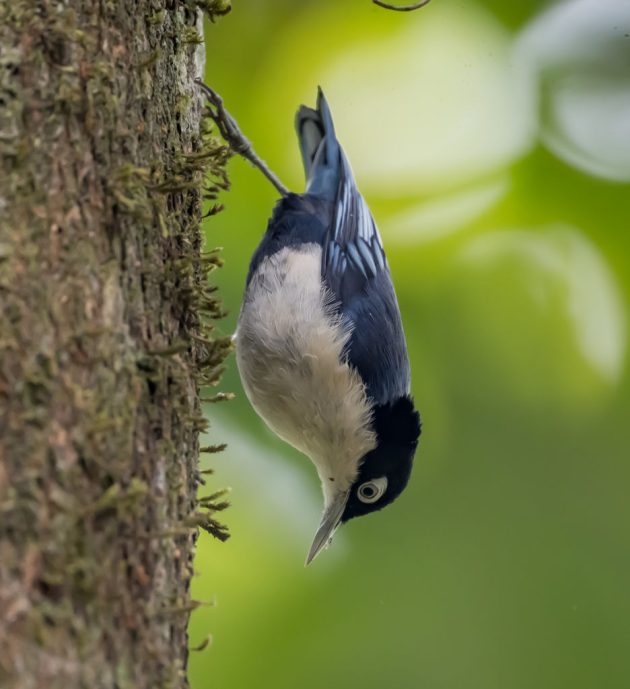
Strangely, that does not keep Cornell from describing it as a “medium-sized nuthatch, usually appearing strikingly black and white”. Makes you wonder if the staff of eBird and of the HBW/Cornell ever manage to peacefully sit together in the canteen of Cornell University.
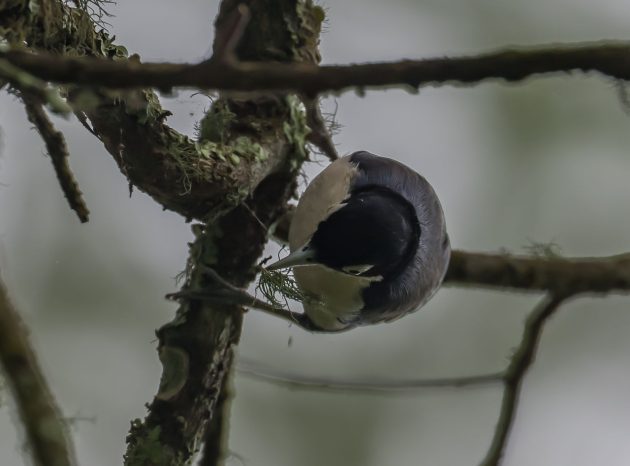
According to Cornell, the breeding season of the Blue Nuthatch in West Java is from April to July – but if the bird in my photo is holding nesting material, then this information might be wrong as the photo was taken at the end of October.
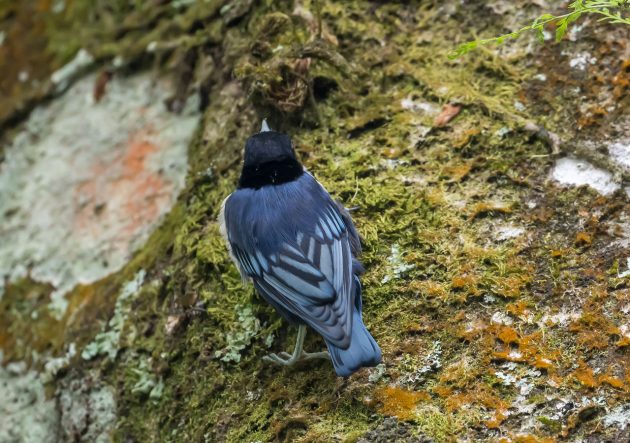
While these nuthatches usually move quite fast, they may freeze if they notice danger, as described here. This would have been rather useful in getting better photos …
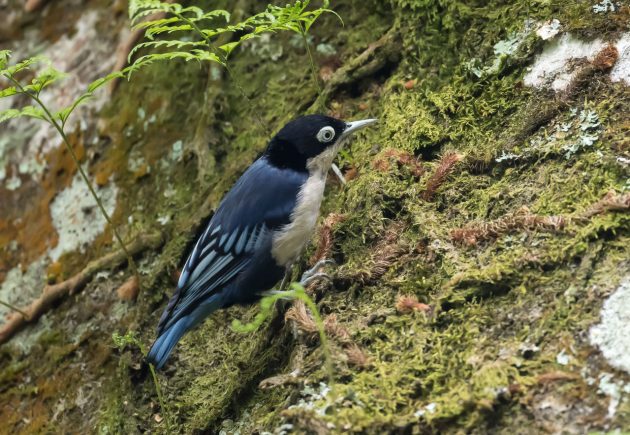
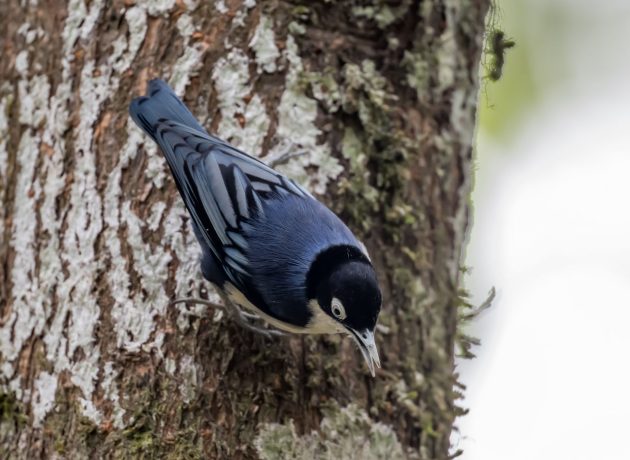
Finding a decent link from one bird species to the next can be tricky, which is why I usually do not even try – or I use my favorite link of Monty Python fame (“And now for something completely different”). But in this case, the blue color of the nuthatch provides the perfect (though admittedly slightly boring) link to the Blue Whistling Thrush.
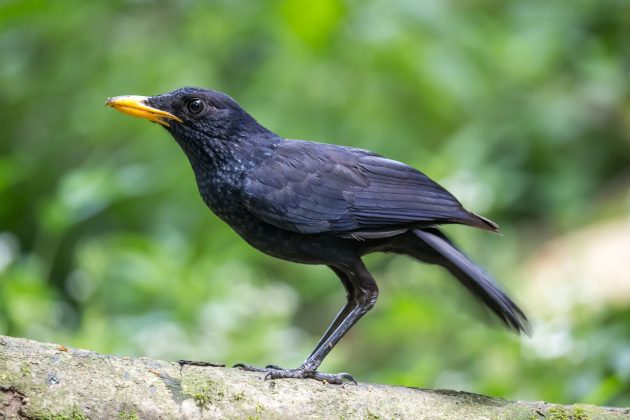
The Cornell description of the species includes the somewhat sexist-sounding sentence “Female is similar but duller”.
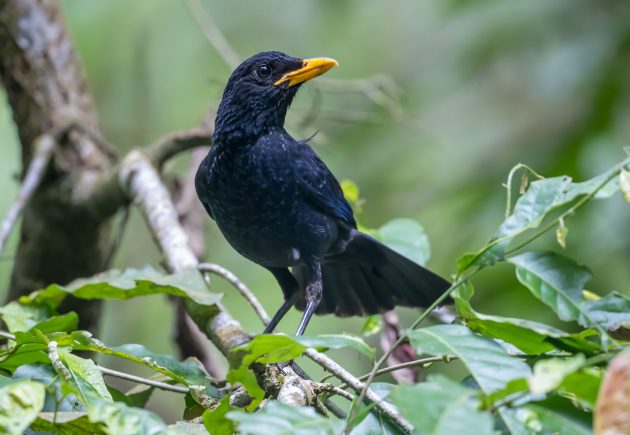
The species seems to be rather eclectic in its choice of food – according to Cornell, normal food items include water beetles, ants dung beetles, slugs, snails, crabs, and earthworms. But there are also records of Blue Whistling Thrushes feeding on snakes (source) or – even more gruesome – on hatchlings of laughingthrushes (paper with photos).

And while I thought by now the mitochondrial genome of all bird species had already been analyzed, for the Blue Whistling Thrush, it was only published in June 2024.
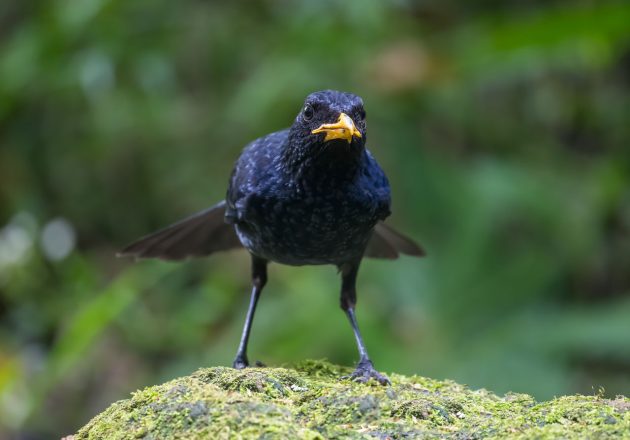
The link to the next species is easier as it is simply another Whistling Thrush. Being on Java, a good guess would be that its name is either Sunda Whistling Thrush (wrong, but indeed that was a species name until it was split into three species including the one mentioned next) or Javan Whistling Thrush (correct).
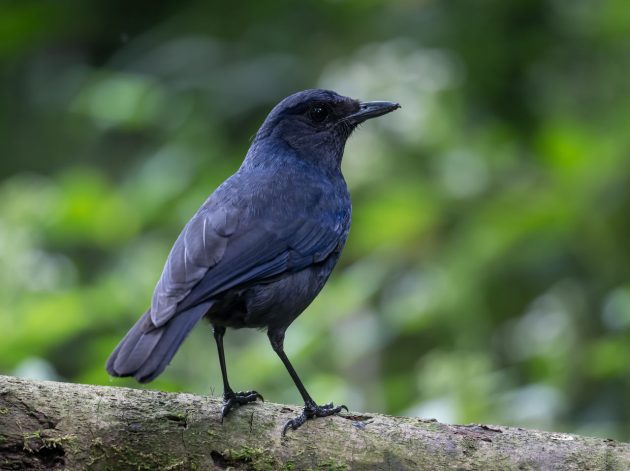
It is substantially smaller than the Blue Whistling Thrush and thus – nature not being a particularly kind place in general – being bullied by its relative when feeding at the same bird hide.
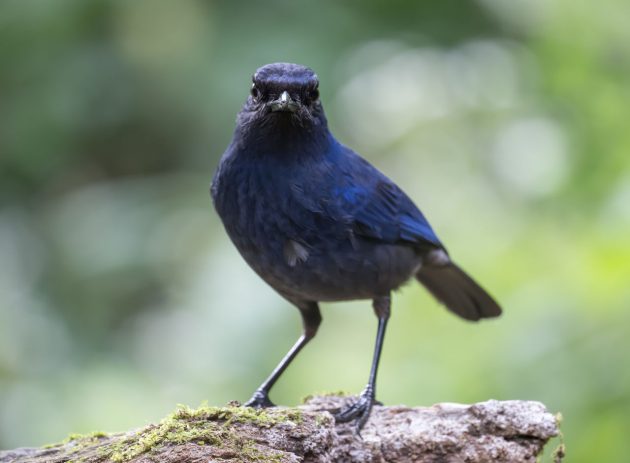
As its blue seems quite intense to me, I do not fully understand the logic behind its scientific name Myophonus glaucinus (glaucinus means bluish-grey rather than intensely blue). My theory is that the name was imposed on the bird on a particularly grey day.
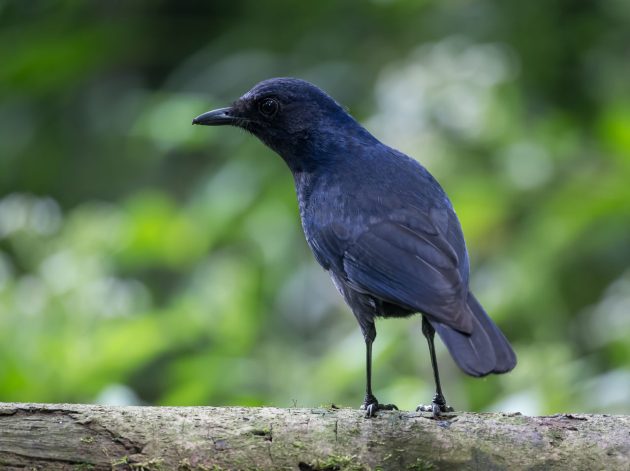

As mentioned above, the Javan Whistling Thrush got its name out of the ashes of the Sunda Whistling Thrush that got split (ok, maybe a slightly too dramatic way to put it). But it makes for a good link to the next three species, whose names all start with Sunda and end with Forktail, Cuckooshrike, and Minivet.
The Sunda Forktail looks a bit like the White-crowned Forktail but is much smaller and only has a white forehead, not a proper crown.
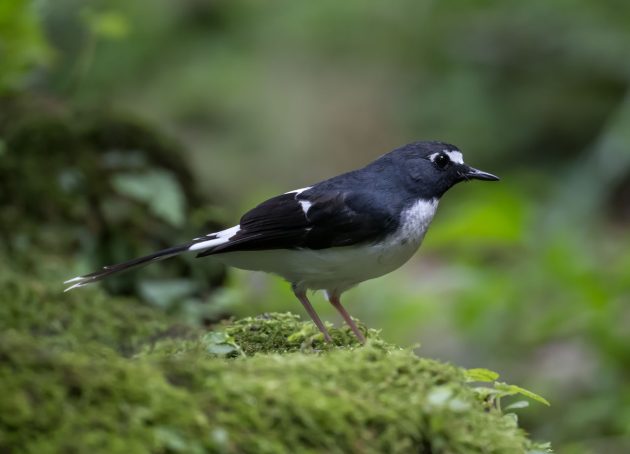
The scientific name Enicurus velatus (velatus means veiled) suggests a slightly overactive imagination – the white on the forehead does not look like a veil to me at all.
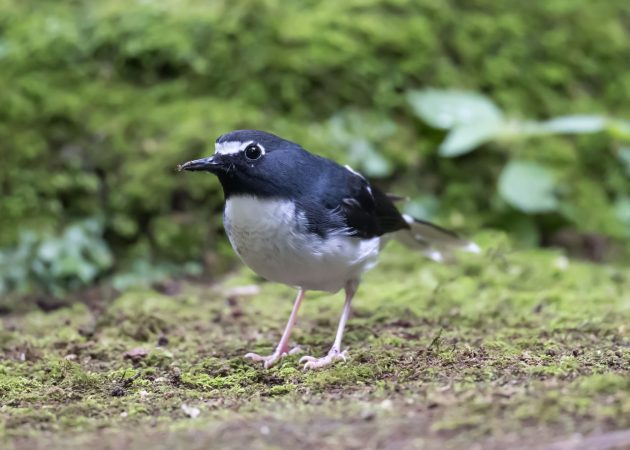
Apparently, the female has some brown on its crown, making it look more interesting than the male – and thus it is no surprise I did not see it.
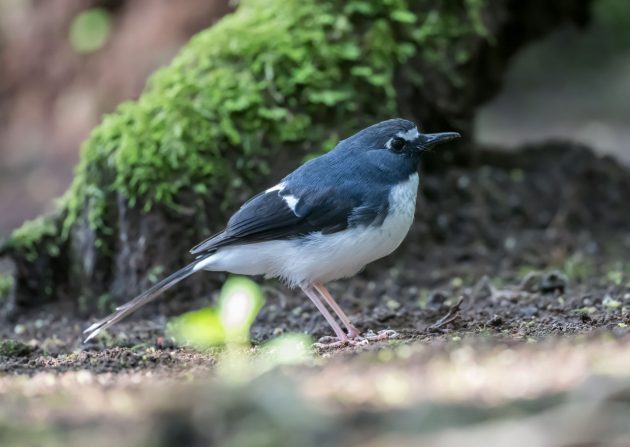
Instead, I saw a Sunda Cuckooshrike – not exactly a bird of exciting colors. Nor is the scientific name Coracina larvata particularly interesting – larvata just means masked.
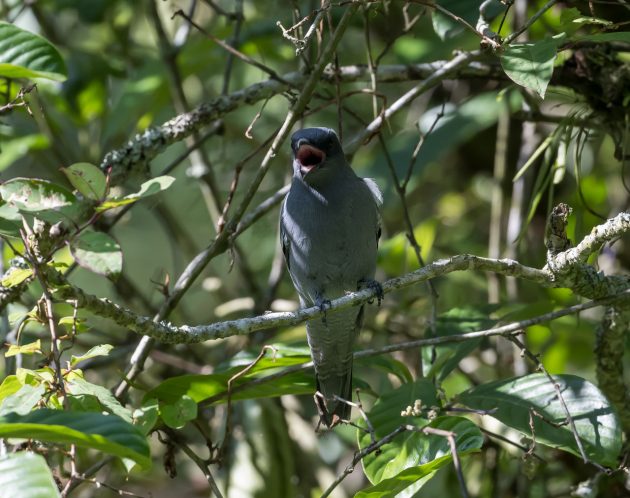
Well, my photos are not so good either.
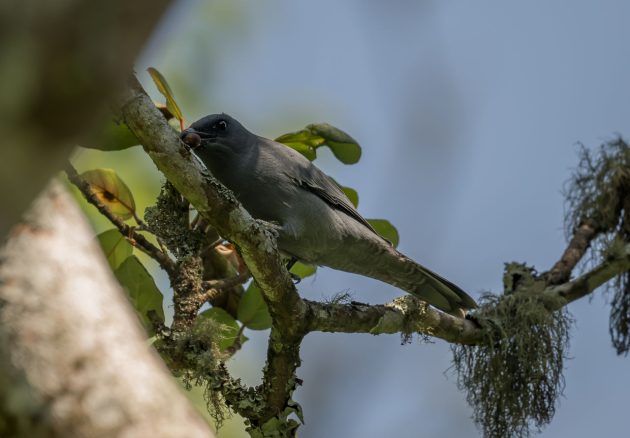
Neither are those of the Sunda Minivet, but at least it has a much more interesting color.
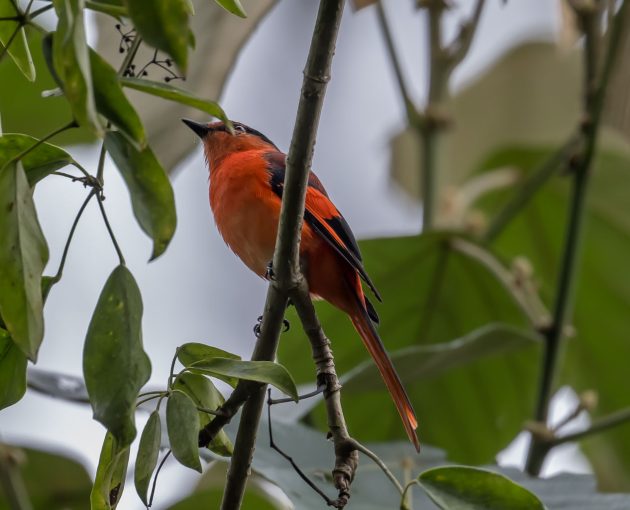
The scientific name Pericrocotus miniatus somehow sounds like it either refers to the mini in Minivet or the size of the bird – in reality, it probably does neither as miniatus just means “painted vermilion” – and indeed, the bird is undeniably bright orange.
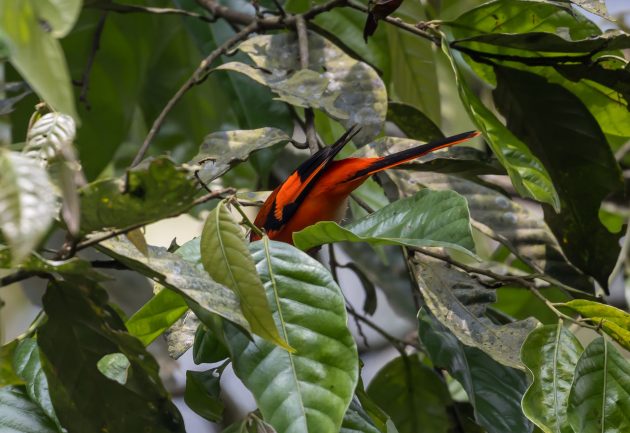
With its completely black head, the male looks very similar to other minivets while the female looks more distinctive, with the head a mixture of black and red.
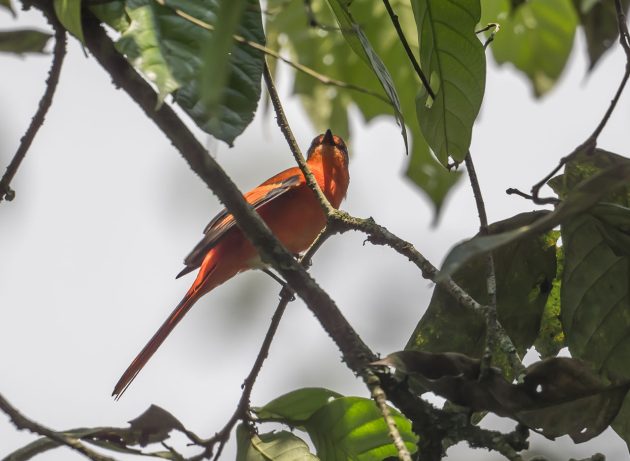
One of the avian attractions of Raden Soerjo apparently is the Javan Hawk-eagle – I saw it, but only in flight (which for me is always less satisfying).
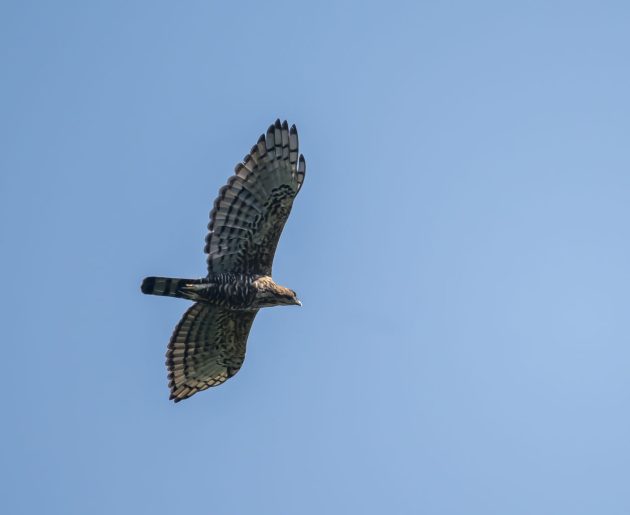
It is listed as Endangered, though fortunately, its numbers have recently increased somewhat (source).
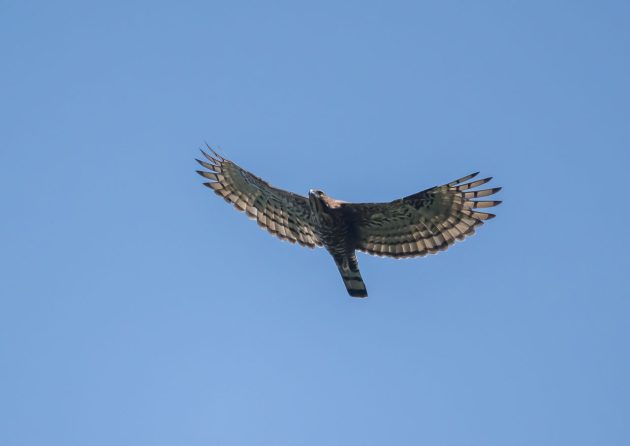
One would think Indonesians should spend a lot of effort on conserving this species as it is the national bird of the country (source).
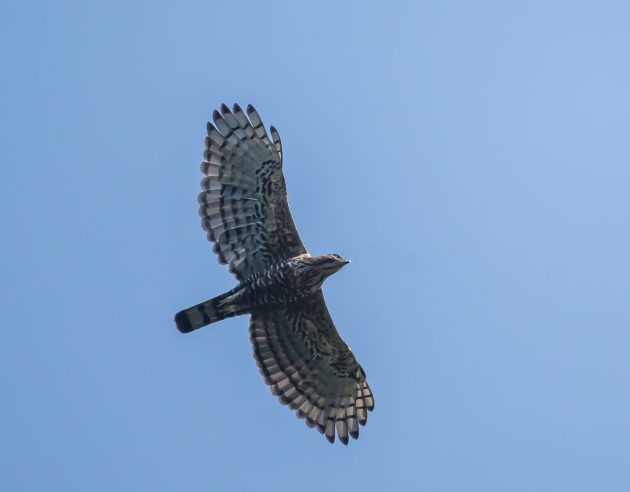
On the other hand, maybe this is a risk in itself – to quote from a paper published in 2000: “The appointment of the eagle as a flagship species involves serious risks, as it appears to have put the species on the list of rare birds that are in great demand with malevolent aviculturists”. Sounds a bit like “damned if you do, damned if you don’t” to me.
Among the 161 bulbul species listed by Cornell, about 18% are listed as Near Threatened (or worse) – the Orange-spotted Bulbul is one of them.
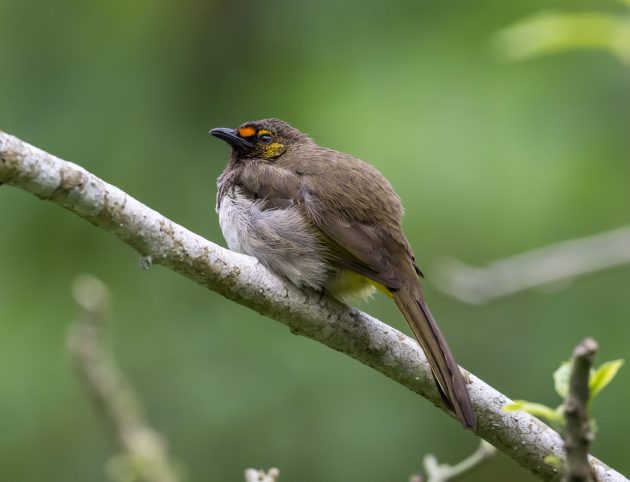
The reason is a common one for Javan bird species – it is one of the most frequently traded species in Indonesia’s bird markets (source) …
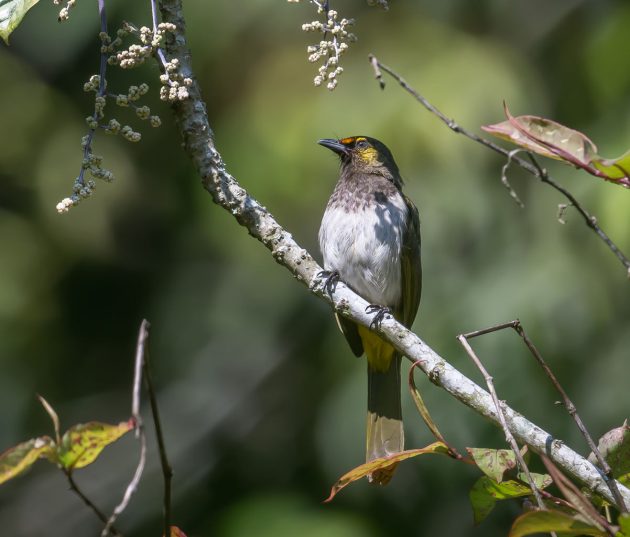
… and Cornell states that “the species has recently apparently become far scarcer at sites on Sumatra in areas experiencing high trapping pressure.”
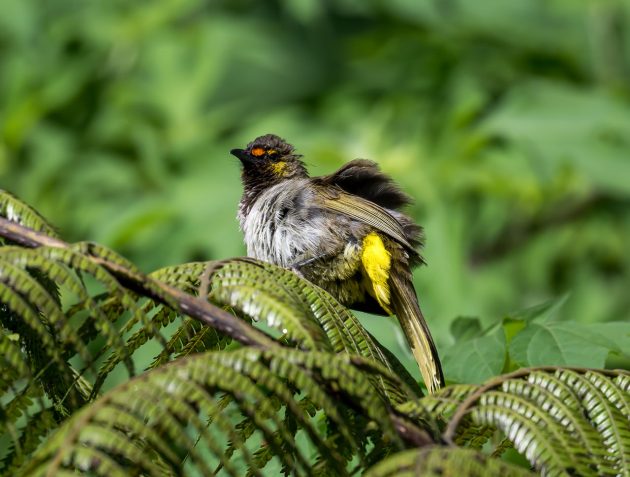
The dangers of being an “attractive” (eBird) bulbul …
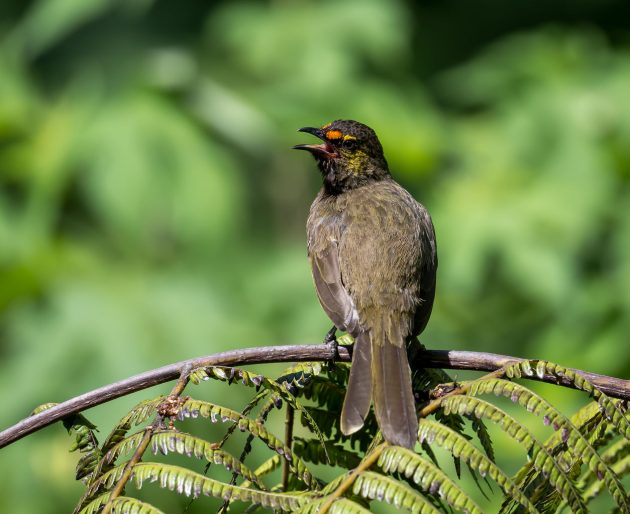
In contrast, the adjective given by eBird to the Crescent-chested Babbler is “handsome”.
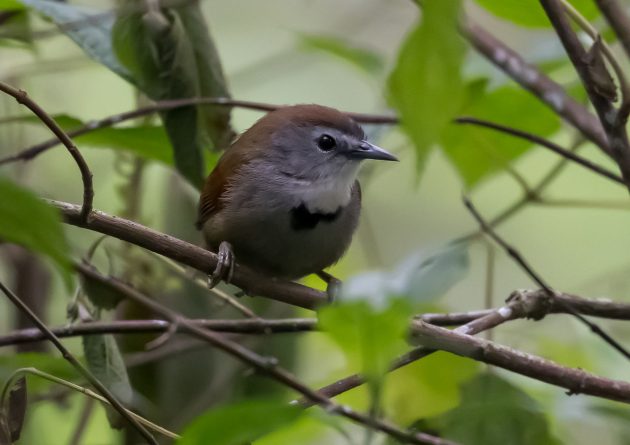
It seems to be a bit luckier than the bulbul in some aspects – “still quite widespread and common due to its habitat preferences, unlike many less fortunate Javan species.” (eBird)
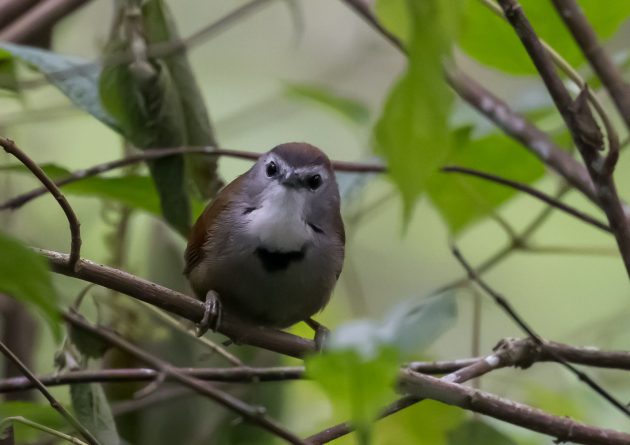
It is also a very difficult bird to get decent photos of, as it stays in the undergrowth and more or less only comes out when flying from one of these clumps to another (and I am way too slow to capture it in flight then).
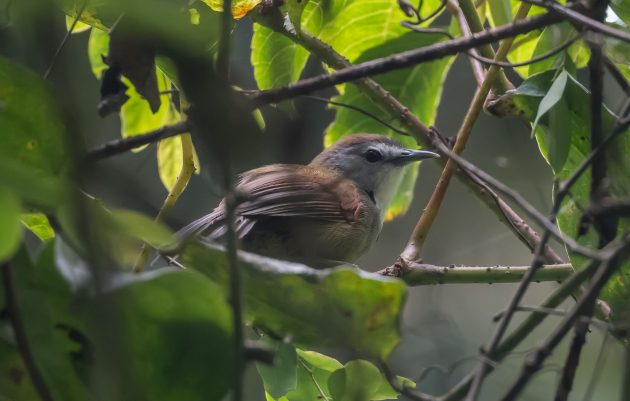
That makes it a relief to document species such as the Ruddy Cuckoo-Dove, which do not move around that much, though they are also much shier.
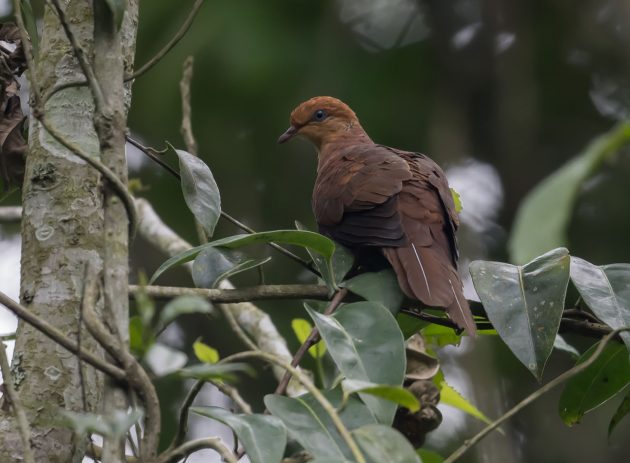
There is not really much research available on this species – it only features in some papers on species diversity in specific locations. The most interesting of these locations is the topic of the paper “Avian diversity in geothermal power plant areas” – even though the conclusion ” The presence of some birds was an indicator of ecosystem condition and functioning” sounds rather lame to me.
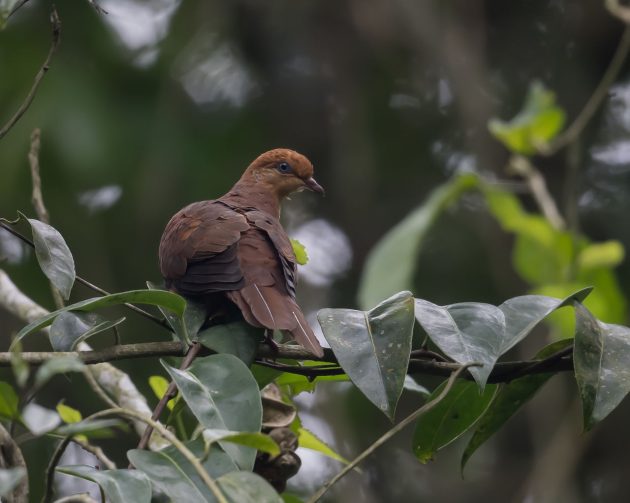
Finally, an interesting-looking reptile encountered while looking for birds.
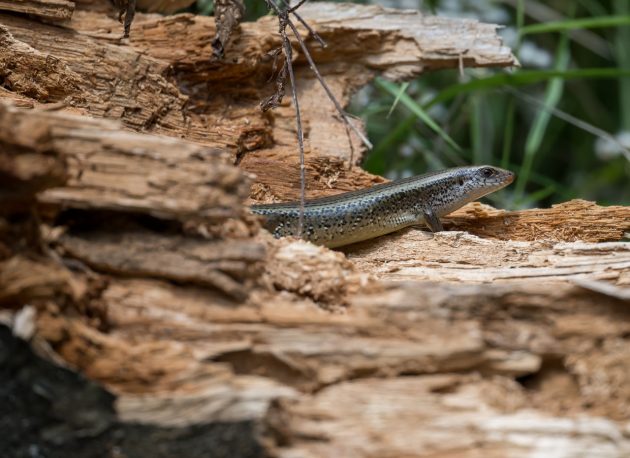
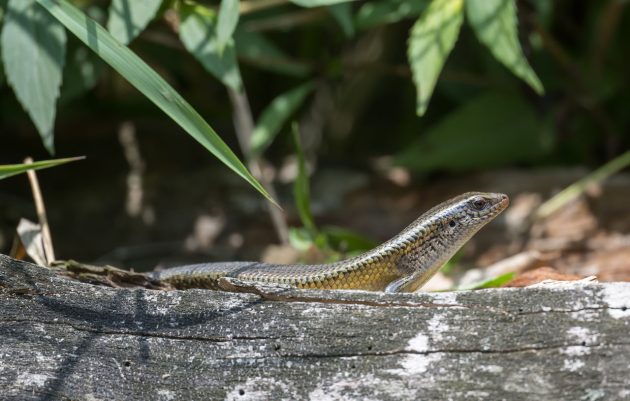


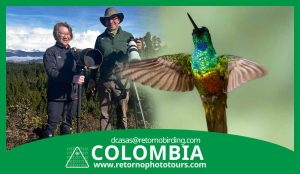
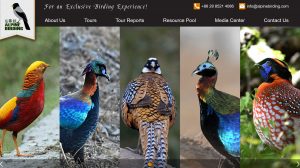
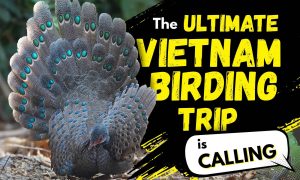

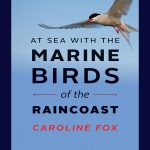
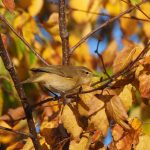
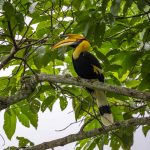


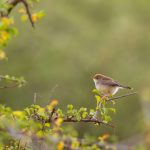
Kai, amazing post with so many birds that I am highly unlikely to ever see. I, too, like bird names and where they come from – good or bad. I also smiled at your small jab at eBird. Well done.
Thank you, Cathy!